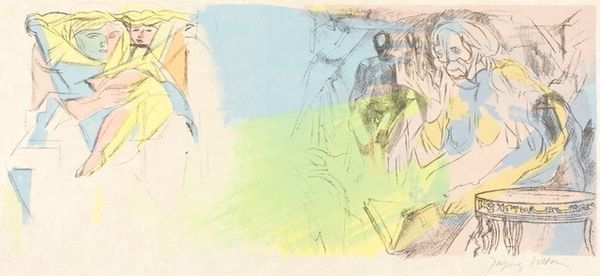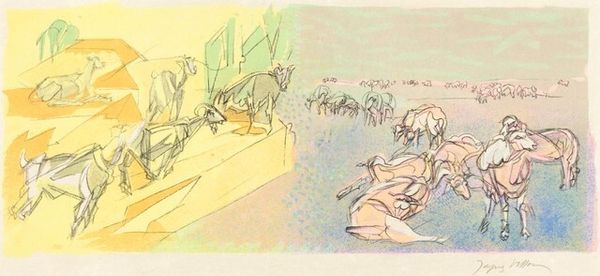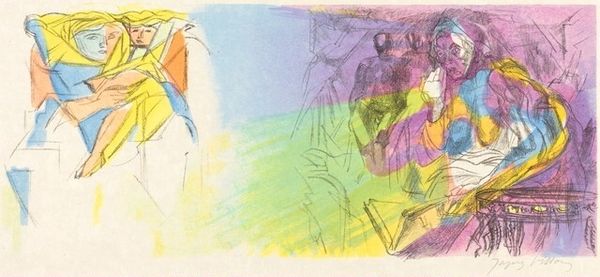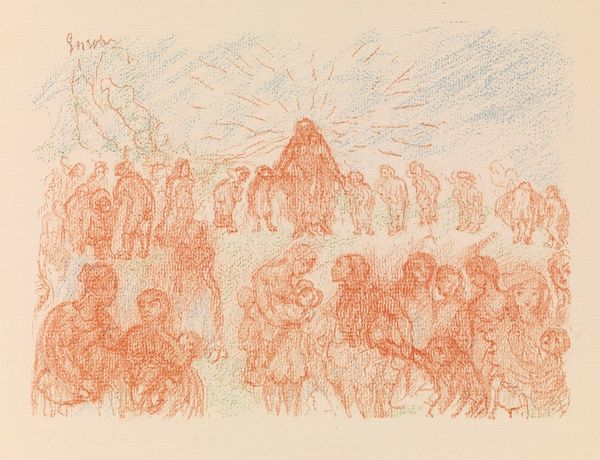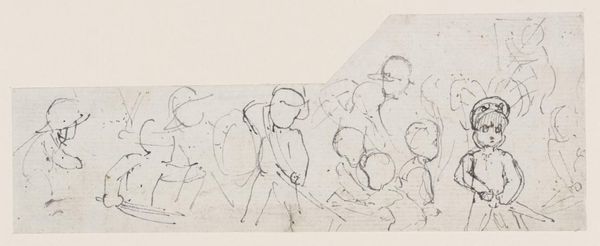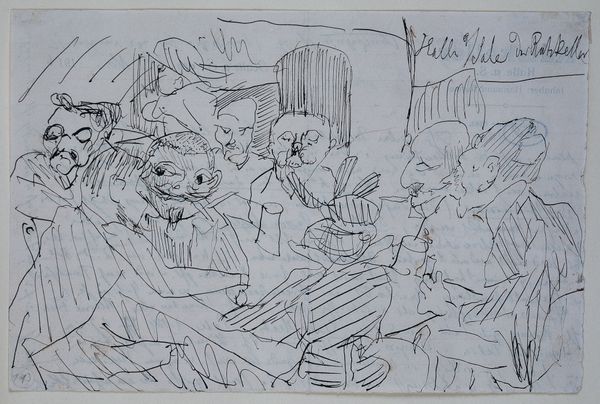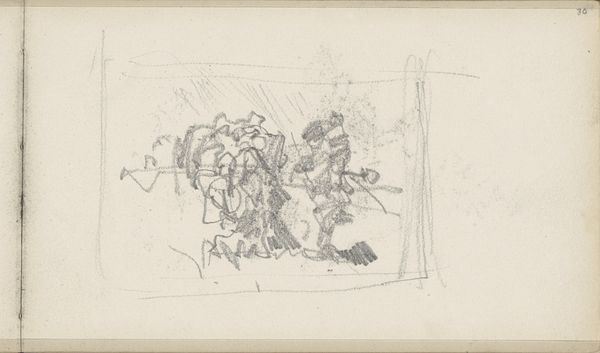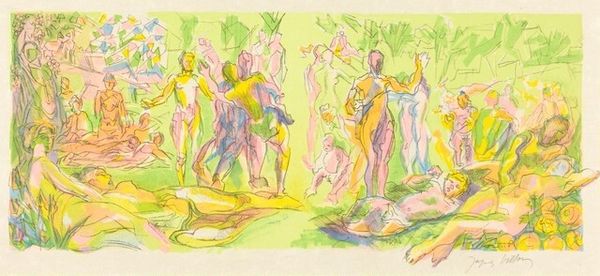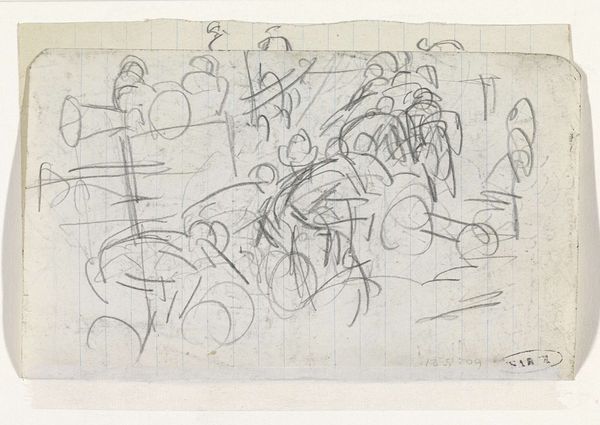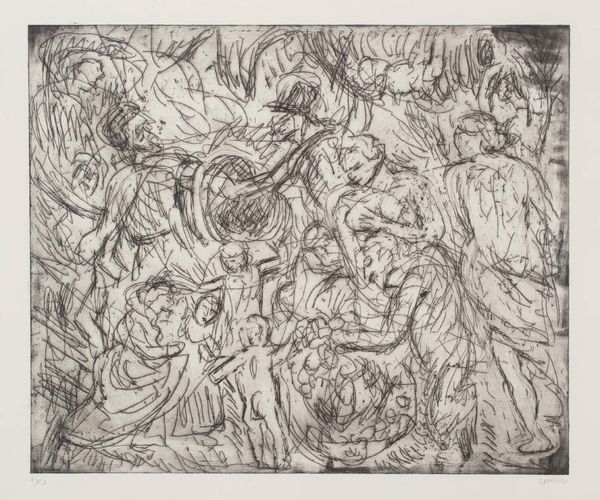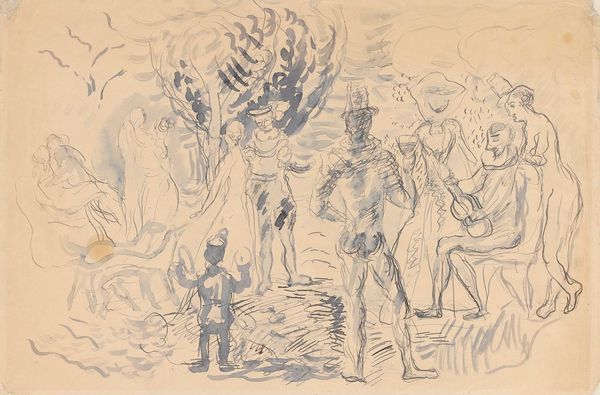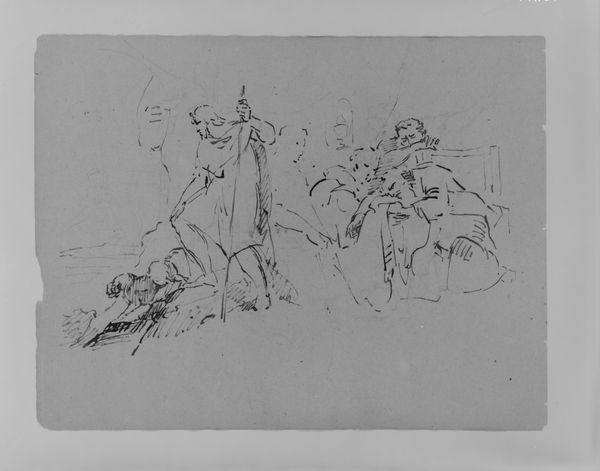
drawing, print, ink
#
drawing
# print
#
landscape
#
figuration
#
ink
#
modernism
Copyright: National Gallery of Art: CC0 1.0
Curator: This is "Third Bucolic: The Gods of Olympia," a 1955 ink drawing and print by Jacques Villon. Its theme clearly centers around figuration in a landscape setting, all executed in a style reminiscent of modernism. What's your immediate reaction? Editor: There's a sort of airy quality. The blue and yellow sections evoke open sky and bright sunlight, but then there are the figures drawn in seemingly anxious and rapid lines. I feel like I'm glimpsing figures from a dream. Curator: That "dreamlike" quality likely stems from Villon's embrace of modernism's stylistic experimentation. He engaged in movements exploring subjective realities and mythic themes. I wonder, how does that inform your reading? Editor: It reinforces it. The combination of classical subject matter—Olympian gods—with a modern, almost frantic visual style makes it a fascinating study of shifting perceptions. The gods aren't presented as serene or timeless but appear fleeting, questioned. Do you feel that's accurate? Curator: To an extent, but the context is important, too. Modern art movements opened channels to interrogate older academic forms. Here, the figures could appear "questioned," but more critically, they're perhaps deconstructed for reconsideration. The old canon itself is under review. Editor: It's such a powerful blending of classical iconography and modernist technique. The use of color blocking alongside these hurried sketches creates a sense of temporal instability. Are these gods, memories of gods, or premonitions of their demise? The symbols—instruments, gestures—are there, but shrouded in visual chaos. Curator: Indeed, by utilizing accessible figures in his own modernist style, Villon essentially democratized his art. Olympus itself transforms, accessible not solely through mythology or academic canon, but through contemporary visual expression. Editor: So rather than pure subversion, it’s perhaps more of a reimagining... the iconography of gods used as vehicles to explore very modern themes of instability, impermanence. I'll remember it as an expression of visual curiosity... that, and maybe just a dash of irreverence. Curator: An insightful summary. By reconsidering conventional presentations of classical figures in a new sociopolitical context, he reminds us that even perceived truths are open to reinvention.
Comments
No comments
Be the first to comment and join the conversation on the ultimate creative platform.
